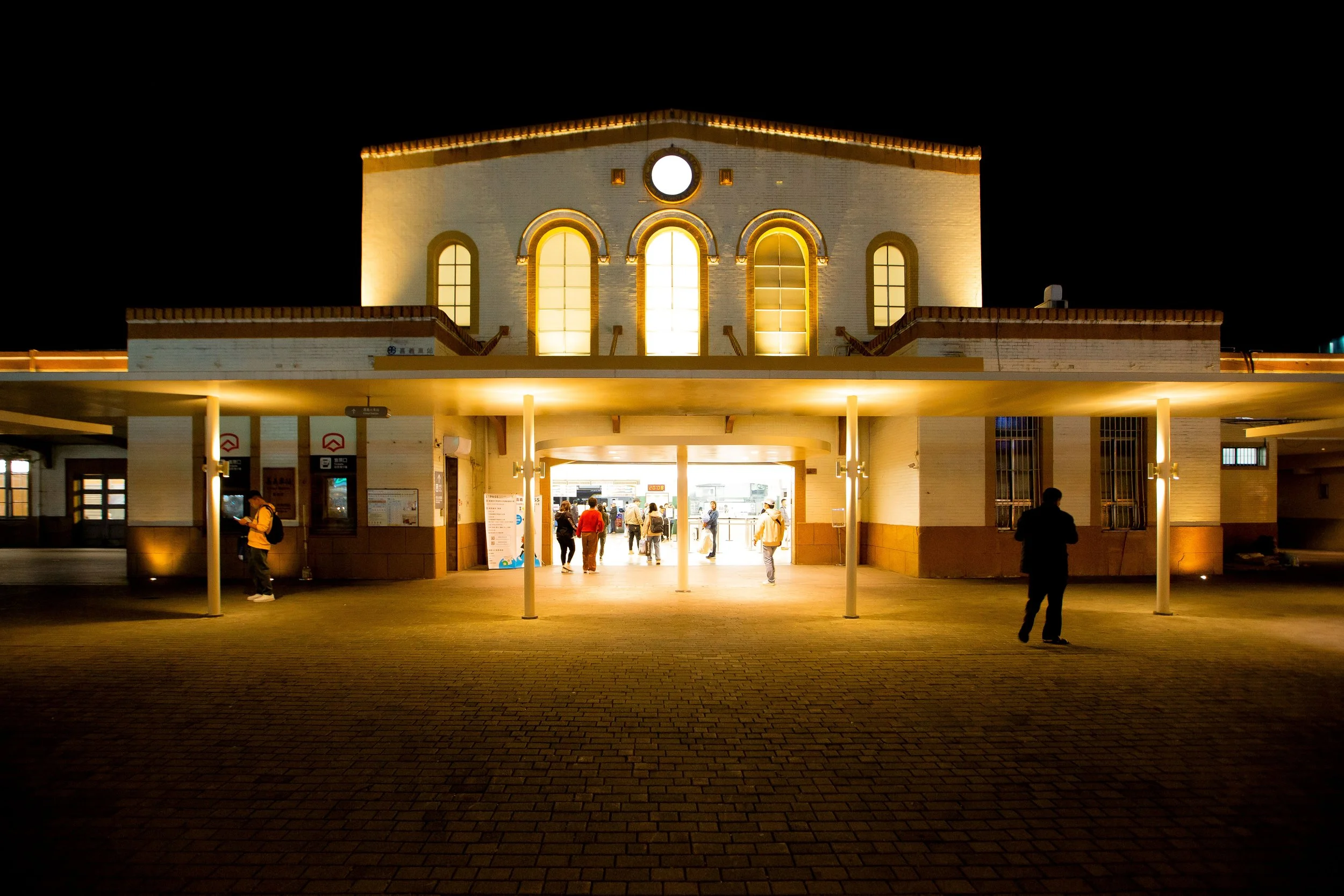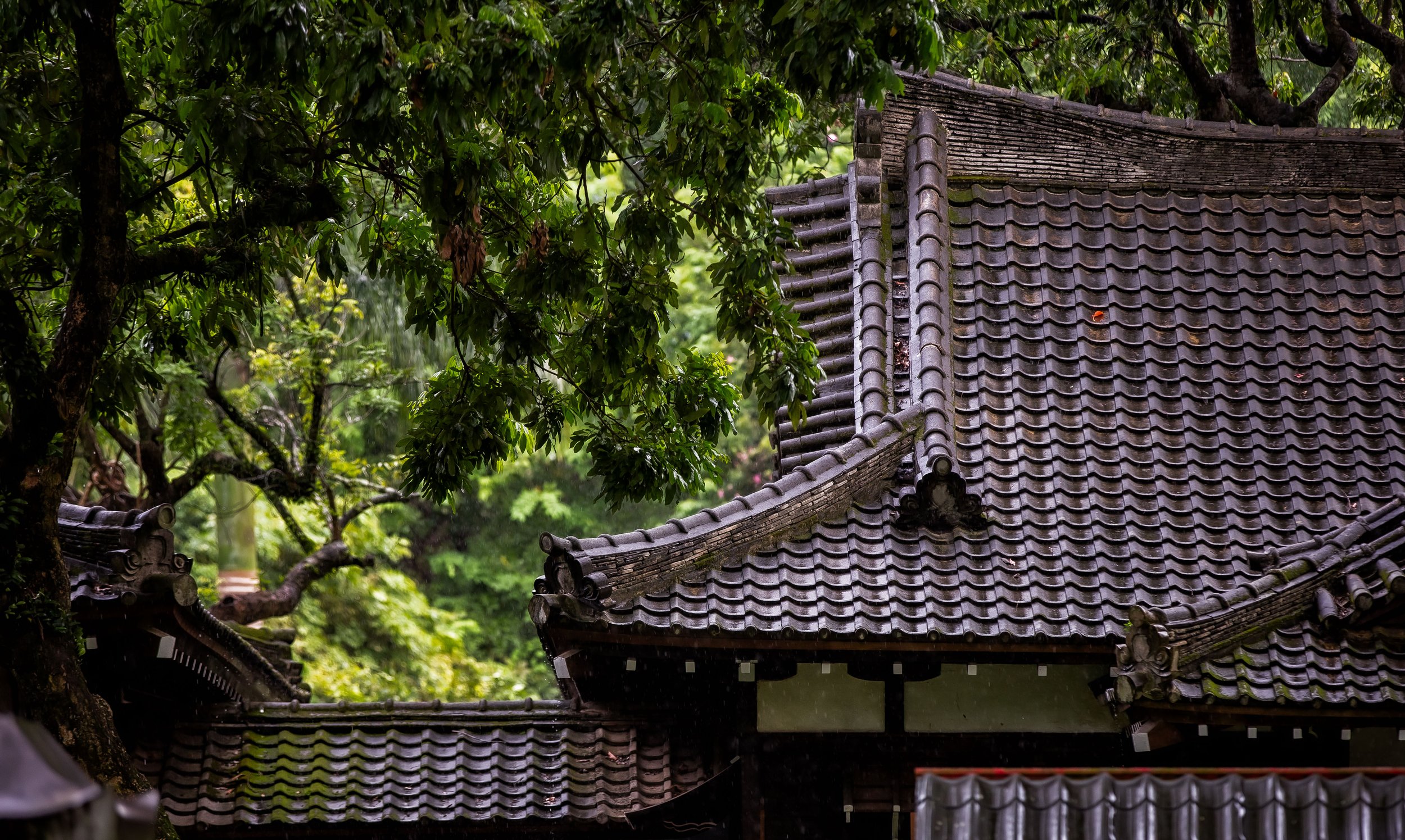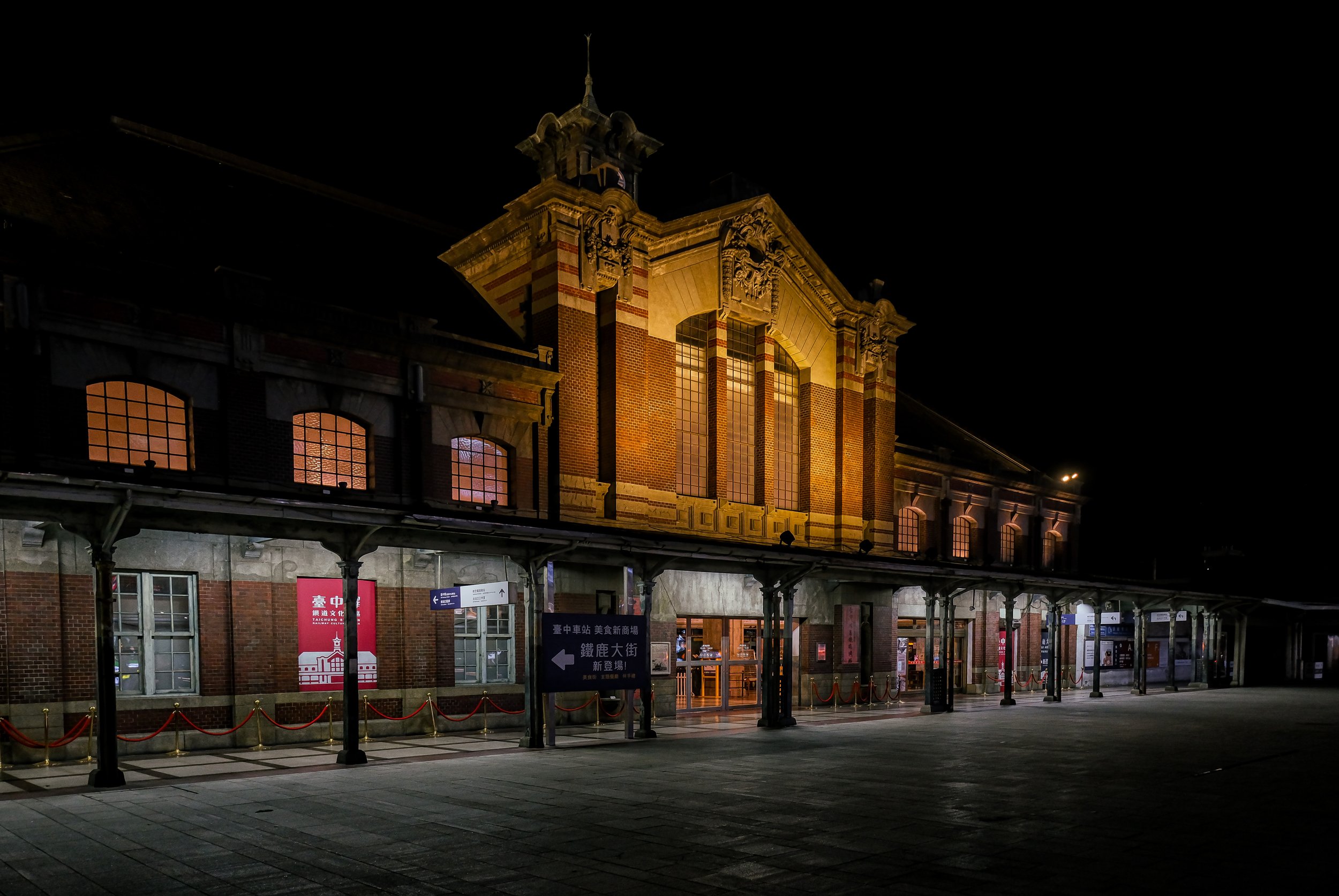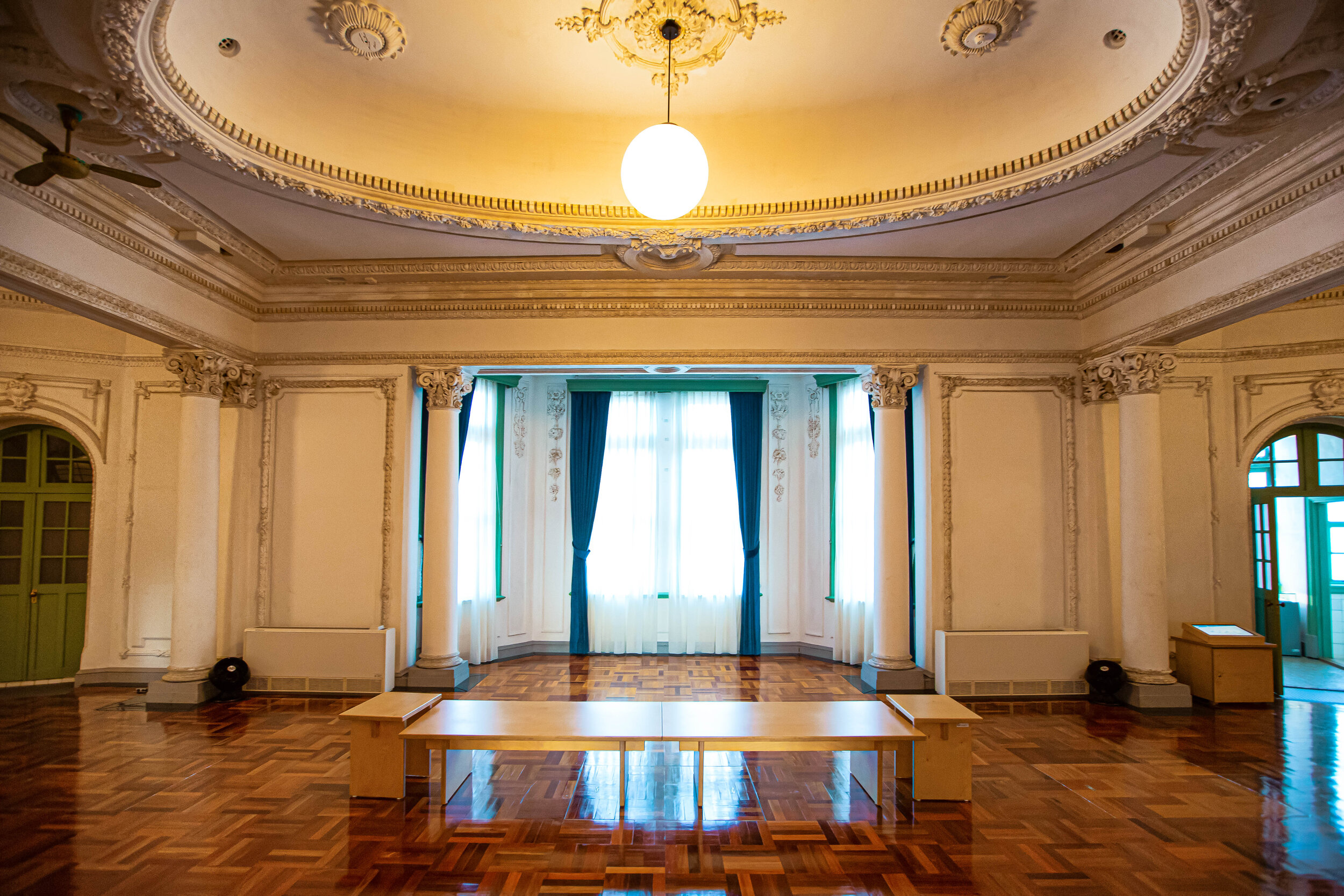In what has become a yearly tradition, I took some time to go back and read over my year-end review for the previous year, while preparing to write this one.
Looking back, all I can say is that we were probably all a little naive.
There we were (once again) foolishly thinking that new year would somehow usher in some much needed positivity and world peace.
Yet within days, 2020 dashed any hope of that happening as a global pandemic reared its ugly head. To say it has been a terrible year for the world would be an understatement.
People have lived under lockdowns, lost their jobs, lost family and friends and have lived in fear of this virus all year long. And unfortunately, it looks like that is going to continue well into 2021.
Fortunately, it seems like we can end the year with the hope of vaccine distribution and an eventual end to all this pandemic misery.
Here in Taiwan, the government was prepared for the onslaught of the COVID-19 pandemic and despite trying to warn the rest of the world before things got out of hand, those warnings were largely ignored by the World Health Organization.
Then a few months into the pandemic people started realizing that the WHO wasn’t really doing its job and that Taiwan was one of the only countries in the world that had successfully taken on the virus, while so many others stubbornly fell victim.
From the outset, the Taiwanese government acted quickly to close the borders, set up quarantine centres and a vigorous contact tracing system in addition to promoting social distancing and mask wearing measures.
Having already suffered through SARS, the people of Taiwan had no interest in the same thing happening again, so the measures implemented by the government were followed and a genius rationing program created by Taiwan’s amazing Digital Minister, Audrey Tang, ensured that every citizen and resident had access to masks until there was an ample supply for everyone.
My Unusually Normal Life in Taiwan Amid the Global Pandemic (Bloomberg)
Record 200 Days With No Local Case Makes Taiwan World’s Envy (Bloomberg)
The year of unexpected successes in Taiwan (East Asia Forum)
How Taiwan Beat the Coronavirus (CNBC)
President of Taiwan: How My Country Prevented a Major Outbreak of COVID-19 (TIME)
Then when the mask situation stabilized, Taiwan started a mask-diplomacy program with the slogan #TaiwanCanHelp that saw millions of masks sent to friends and neighbours around the world.
I might be beating a dead horse here, but even though it has been a rough year for so many countries, Taiwan has done an excellent job showing what this beautiful nation is capable of and why it is so important that it be allowed to contribute on the international stage.
For those of us like myself, who aren’t citizens of this country, but are lucky enough to call Taiwan home, we have benefitted greatly by all the hard work of all those in the government and health care community.
Their tireless work with the cooperation of the citizens of this country has allowed us all to continue going about our daily lives in somewhat of a normal manner.
I’ve always felt a strong sense of pride about being able to live in Taiwan, but this year I feel blessed.
That being said, not everything sucked this year.
2020 was a year where WOMEN LEADERS got the job done.
President Tsai, Jacinda Arden, Sanna Marin and Angela Merkel, among others showed the world that female leadership makes the world a better place.
The environment is still in jeopardy, but this year carbon emissions fell by the largest amount ever recorded, ownership of electric vehicles is on the rise, over a billion trees were planted and renewable energy continues to grow!
We’ve reevaluated our priorities, how we approach our professional lives and for better or for worse, reconnected with family and friends in a way that many of us never had time for.
And for some couples, all that time spent together helped them realize that they probably weren’t soulmates, after all - Coronavirus-divorce became a real thing in 2020.
Which is kind of hilarious if you think about it.
In many ways, we’ve grown as a civilization throughout this pandemic and the lessons that were learned are some that I hope will continue well into the future.
Personally, I can’t really complain too much.
I’m fortunate to have been able to continue my life in ways that most people can’t back at home couldn’t.
I’ve taken trips, I’ve gone to movie theaters, went to live concerts and even saw the Phantom of the Opera live in Taipei.
Meanwhile my family back in Canada has been forced to endure several different lockdowns and has more or less bunkered down for months.
Like so many other industries around the world, photography (especially travel photography) has taken a big hit and over the past twelve months, most companies have stuck to purchasing whatever stock photography is readily available, rather than contracting someone for new photos. This is completely understandable, as no one wants to put others in harms way. It has forced countless photographers to go looking for work elsewhere and has put quite a few people out of business.
I’ve managed to keep busy with personal projects but my income took a big hit this year. Nevertheless, I’m happy and healthy and can’t complain.
As we enter the new year and vaccines start to become available, it’s important that we collectively keep in mind that we still have so many other problems to solve.
We’ve faced this pandemic head on and many of us have lost family and friends along the way and even though the world continues to be a messy place, we have a responsibility to work together to solve problems, rather than making them worse.
I think that if we’re able to take something away from this year, it’s that we’re often our best selves when we’re faced with hardship and tragedy. Amid all of our struggles and disappointments throughout this very long year, the human spirit has endured, heroes have emerged and we should be able to come out of this stronger than ever before.
Plans for the New Year
When I write these yearly review posts, I like to look to the future direction of this blog and what you can expect to see over the next few months.
I’ve recently added a new section to the website with galleries of photos with recent work. I’m often so slow to post blogs after I take photos that people often wonder what I’ve been up to. This new page should help with previews of new work and should also give an indication of what to expect in the near future!
I have a couple large travel guides coming up for some locations on the East Coast. I actually have quite a few places to write about from my most recent trip to Taitung and Hualien.
So I’ll actually start to fill up the east coast on my blog map, which is sadly still rather empty.
There won’t be much of a shift in direction for my on-going projects this year, I’ll continue working on visiting places from the Japanese Colonial Era as well as trying to complete my work on the Martyrs Shrines.
My focus on the colonial era will specifically focus on railway-related buildings, the restoration of dormitories, police stations and Martial Arts Halls, among others.
I hope to include some more travel guides for mountainous areas like Taiping Mountain (太平山) and Alishan (阿里山) while also hoping to get back to some of Taiwan’s highest mountain, in addition to another trip to Yushan.
More or less, I’m going to continue along the same trajectory and will also do my best to continue updating older posts, like I have this year.
As usual, for my end of the year review, I’m going to link some of the blog posts from this year that I’m proudest of, as well some of my favourite photos. I’m also going to provide a list of your favourite posts, based on how much traffic they received over the year.
My Favourite Blogs of the Year
When the Taiwan Railway Museum had its soft opening, I visited to check it out and was delighted with all the amazing work that went into restoring the former Taihoku Railway Building and its transformation into one of Taiwan’s hippest new museums.
It certainly took me a while to finish this post, but as it is probably the most in-depth article on the web about the history of the building and the museum, I think it was worth the wait.
I’m a huge fan of this museum and as the restoration work is on-going, I plan to visit MANY more times in the future.
I think you should too!
Linkou Guanyin Temple (林口竹林山觀音寺)
One of my earliest posts of the year, there is something epic about this jaw-dropping temple.
Even though the photos for this blog and most of the writing was done in 2019, this was one of my favourite temple-related posts of the year.
This extremely photogenic temple is a testament to Taiwanese architectural design, artistry and careful attention to detail. Visiting this one is a visual spectacle akin to that of Roman cathedrals.
Chinese Assembly Halls of Hoi An (會安華人會館)
After my January trip to Vietnam, I embarked on a project of researching and writing about the overseas Chinese Assembly Halls of Hoi An, which is a topic that is not covered very well in English.
The Assembly Halls, of which there are a handful, were all constructed in the UNESCO World Heritage port town by the various groups of Chinese traders who immigrated there hundreds of years ago.
Acting as a cultural and religious community centre, the Assembly Halls were important for the preservation of culture and language and have become important destinations on the list of places tourists while in town.
With this blog, I introduced the purpose of the Assembly Halls and gave a brief introduction to each of them, with links to the articles about each of the individual halls.
This is a project that took up the first few months of the year, and I’m happy that they’re all available for when tourism starts to perk up again.
The Taoyuan Valley (桃源谷步道)
Regretfully, I didn’t get to post too many hiking blogs this year.
So I thought with this one, I’d go all out.
This in-depth post about the popular Taoyuan Valley hike contains photos from the two times that I hiked the mountain this year and provides information on all of the trails that hikers can take to complete this awesome hike.
Chiang Mai’s Silver Temple
People seem to think that I visit a lot of weird places.
One of the weirdest places I visited this year was Chiang Mai’s Silver Temple, which is, you guessed it, silver.
This Buddhist temple is a weird and wonderful work of art that comes across as excessive, but is also a nod to the community of silversmiths that have made a comfortable living in this neighbourhood for centuries.
But yeah, it is weird, it’s a male-only temple and there are a lot of strange things going on in terms of the art on display, from murals of aliens to the Avengers.
Suffice to say, even after visited a Taiwanese temple with a real-life mummy on display, I still consider this one stranger.
But I also recommend everyone visit!
Your Favourite Blogs of the Year
While I’m not entirely sure what happened, my post about the Wanli UFO Village started attracting quite a bit of traffic both domestically and internationally.
A few months ago I was even contacted by a local media outlet for an interview about the village. Which I ignored, because.. well... That media organization sucks and they’re gone now!
While there has always been a niche crowd of enthusiasts who love these pod-houses, for some reason they attracted attention from all over the world throughout the year and catapulted this post to number one in terms of traffic.
Looks like I’ll have to update this one with better photos.
Buddha’s World Abandoned Theme Park (佛陀世界)
In a situation similar to what happened above, the ‘Buddha’s World Theme Park’ here in Taoyuan attracted quite a bit of attention and pushed it up to my second most popular post of the year.
In this case I wasn’t contacted by the local media, but when it was randomly shared on social media, people kind of fell in love with this weird semi-abandoned amusement park.
I’m actually planning a return visit to the park to get some better photos. With all the attention the post has been getting, I’m kind of embarrassed by the quality of photos on the post.
I’ll likely update the post sometime in the new year.
Thousand Island Lake (千島湖)
This is another one that kind of confuses me.
I wrote this post a few years ago and at the time only provided a few mediocre photos and a little information.
I guess though, there isn’t much information about the ‘lake’ in English on the internet, so quite a few people arrive at my site looking to find out more.
This is another one that I’m going to have to update this year, because I don’t think the photos or the information on the post are up to my typical standards.
Pingxi Crags
Over the past few years, my post about the Pingxi Crags, one of the most popular day-hikes in northern Taiwan has consistently been one of the most popular.
Even though it got pushed to number four this year, it’s one that constantly attracts new visitors.
This is why I updated it earlier this year with new photos and updated info.
I guess the long-lasting popularity of this hike means that it’ll be a popular post for years to come.
And if you’re living in Taiwan and haven’t hiked it, what are you waiting for?
Sacred Mother Trail (聖母登山步道)
The ”Sacred Mother Trail”, known in Chinese simply as Matcha Mountain (抹茶山) is another one of those recently popular hiking trails in northern Taiwan.
These days the trail is packed with (wannabe) Instagram celebrities and models thanks to the picturesque rolling green mountain slopes on neighboring mountains near the peak that are thought to look like massive lumps of matcha, a variety of Japanese green tea.
This hike has become so popular that not only will you find Instagrammers, but also their entire families, their dogs and also a bunch of foreign tourists.
Should you try to hike this one? Definitely. I’d just avoid weekends if at all possible.
Cyberbullying And Harassment In Taiwan
This one is kind of a (dis)honorable mention.
One of the most highly visited articles on my site this year was actually a post about my experience with cyber-harassment over the past couple years with a deranged stalker.
I didn’t want to include it in my top five blogs as the article wasn’t photography related, but considering how it accumulated tens of thousands of visits and would have been my number three most-viewed blog post, I thought I should at least give it a mention.
I hope that the large amount of visitors to the page weren’t showing up to learn about a bit of drama, but instead hoping to learn how to protect themselves from a similar experience.
Thankfully, the Taiwanese government is looking at ways to solve the problems that I addressed in the blog, so hopefully other people won’t have to suffer through the same stupidity I have had to.
Social media can be great, but there are a lot of scary people. Be careful!
My Favourite Photos of the Year
Swimming at the “Secret” Cave
While hanging out on Orchid Island, one of Taiwan’s off-shore islands, I got to spend quite a bit of time swimming, cliff jumping and laying on beautiful beaches. One of the coolest places that I got to visit was a not-so-secret, secret cave where the ocean water is just a bit warmer and you get views like this.
I’m in the process of writing and working on a travel guide to Orchid Island, which I’ll probably post sometime early in 2021. You’ll see more photos like this one soon enough!
The General on Film
One of the highlights of the year on the religious calendar in Northern Taiwan is always the Hsinchu City God Inspection, which turns one of Taiwan’s most high-tech cities into complete chaos and celebration in the late stages of the summer. This year I brought one of my film cameras along for the ride and got this really nice portrait of one of the Underworld Generals.
I’m currently in the process of planning and organizing an exhibition of film portraits like this one at a really nice local art space here in Taoyuan, which should happen sometime in the new year.
I’ll probably be announcing that soon enough.
Resting on the Trail
As I mentioned above, I hiked the beautiful Taoyuan Valley twice this year in preparation for my post about the hike. The first time I did the hike, the weather was forecast to be really nice, but it took a turn for the worse, so I didn’t end up getting the photos that I wanted. On my second attempt the weather was really nice for about 75% of the hike before it started to rain.
While on the way to the top, I stopped in at one of the beautiful pavilions set up for weary hikers and chatted with a couple of older hikers who were having their lunch. After eating, one of them laid down and I took this shot of him relaxing with the beautiful mountains in the background.
Technically speaking, its not a great photo, but one of the things I love about hiking in Taiwan is that all the seasoned hikers you meet on the trails are all so friendly and even though I often find myself chatting with complete strangers, they rarely ever ask the typical questions that foreigners get on a daily basis.
National Concert Hall Reflection
Even though the Worldwide Pride Parade is generally held in June, Taiwan’s parade, most often the largest of its kind in Asia is held in late October.
This year though, with COVID wreaking havoc across the world and cancelling many of the world’s celebrations, a smaller parade was organized in Taipei to show solidarity with those who couldn’t march.
The parade ended up being a smaller gathering of only about a thousand people, but it ended up being fun, despite the torrential downpours that forced most of us to squeeze together under the “Liberty Square” gate at Chiang Kai-Shek Memorial Hall.
I took this photo of the National Concert Hall, with its reflection on the rain-soaked ground just after the rain let up and the photo became quite popular on social media.
Monks looking back in Chiang Mai
Just before COVID started spreading around the world like a wildfire, I took a trip to Vietnam and Northern Thailand, where I hung out for a couple weeks just before Taiwan’s Presidential Election.
One of the highlights of my visit was the northern Thailand city of Chiang Mai where I ate amazing food, hung out in laid back coffee shops and toured some beautiful temples.
One of the coolest places that I visited on the trip was the ‘SIlver Temple’, which is one of the oddest places of worship I’ve ever been to.
While inside the (male-only) shrine room, a couple of visiting monks came in to check it out as well. I got this shot of them while one of them who turned around to check me out.
Halong Bay Landscape
What can I say? Halong Bay is beautiful and for a landscape photographer, it’s a paradise.
Unfortunately the weather kind of sucked on the days that we were there.
Nevertheless, visiting this iconic bay was one of the highlights of my year.
Taroko Gorge
I’ve been writing this blog for so many years, traveling around Taiwan and introducing the nation’s tourist destinations, but one of them has always eluded me - Taroko Gorge.
Well, that problem will be remedied early next year when I post a travel guide for one of Taiwan’s most highly visited National Parks. One which I hope to expand upon several times in the near future.
I’m a fan of this photo not just because its from Taroko Gorge, but the sharpness of the details of this age-old wonder of nature.
Qingshui Cliffs
One of my favorite places to visit while in Hualien has always been the Qingshui Cliffs.
The cliffs are absolutely beautiful and it doesn’t matter if you’re taking photos from atop a mountain platform or on the beach, the views are spectacular. During my trip to the East Coast, I made sure to stop by the cliffs to check out the view before heading further into Taroko National Park. Fortunately this time I was able to see some new views and see how things have changed in the years since I wrote my article about the area.
I’ve now updated the post with more in-depth info that should help travelers quite a bit.
As always, I hope that despite all the terrible things that happened this year that we can all return to some semblance of normalcy soon. This has been a rough year for the entire planet and even though we’ve ridden out most of the storm safety here in Taiwan, family and friends throughout the world haven’t been as fortunate.
No matter where you are, I hope that you and your family are healthy and safe.
We’ve almost got this thing beat.
Let’s hope that the new year will bring some better fortune for our little planet.
Happy New Year Everyone! 新年快樂
Josh

























































